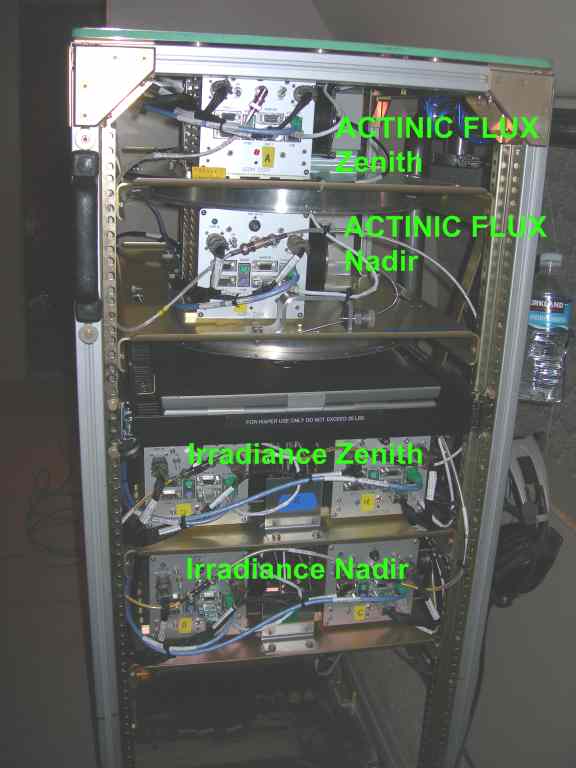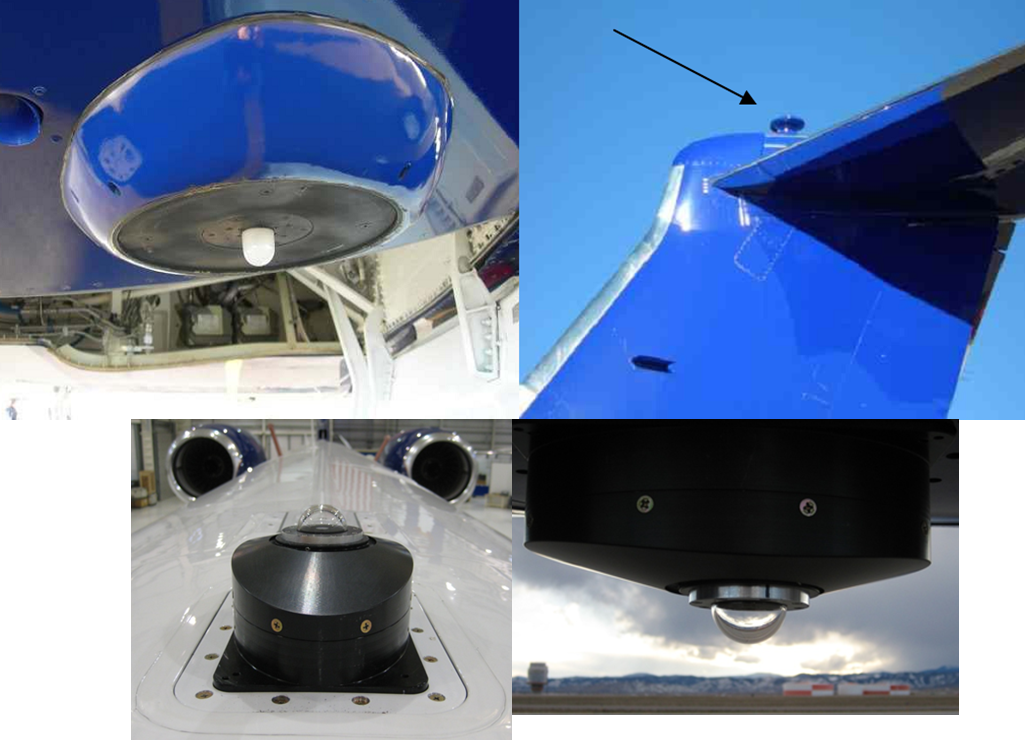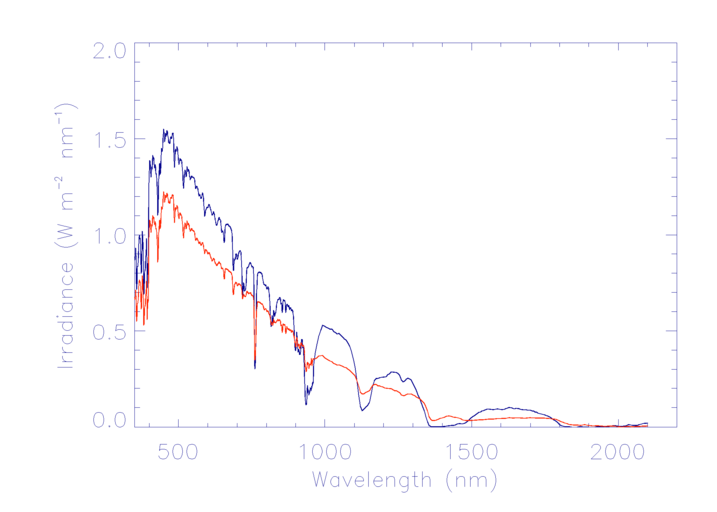HIAPER Airborne Radiation Package
Short Name or Variable Name
HARP
- The instrument consists of two components:
- actinic flux: 280-680 nm, spectrally resolved, up and down
- This system consists of two hemispheric light collectors, each connected by fiber optics to a monolithic solid state spectrograph with a CCD detector. The UV spectral resolution is about 1.8 nm, and the field of view is the full sky up and down. The measurements then characterize the radiation environment responsible for photochemistry. The upward-viewing light collector is mounted on the top of the tail to avoid shielding by the tail.
- spectral irradiance: 260-2217 nm, spectrally resolved, up and down
- This system consists of spectrometers viewing up and down. A light collector with response proportional to the cosine of the incident radiation delivers the radiation to the spectrometers. To extend the range of wavelengths, two spectrometers are used in each direction, ranging from the visible into the near IR.
- The spectral characteristics of both components are summarized in the following table:

- The HARP rack:

- The HARP collectors. Clockwise from upper left: actinic flux, nadir; actinic flux, zenith; irradiance, nadir; irradiance zenith.

-
Measurements Provided: Actinic Flux and Stabilized Spectral Irradiance
Measurement Characteristics:
- Overall estimate of uncertainty: 4-6% for spectral actinic flux; 3-5% for spectral irradiance
- Response time: samples collected at 1-10 Hz for actinic flux and 1-2 Hz for irradiance. Instrument response is faster than this.
- Precision: 1%, both actinic flux and irradiance
History of Significant Changes:
- 2009: Stabilized platforms reconfigured to accept direct GPS antenna feed instead of GPS receiver feed, whose delay exceeded the maximum allowed for proper stabilization.
- 2011: Stabilized platform software upgraded by Enviscope GmbH to allow manual input of platform limits. Prior version did not allow operation in the case of automatic limit detection failure.
- 2012: Following a failure during TORERO, the stabilized platforms were repaired and modified by Enviscope. Drive motor clutches were installed and the limit switch circuitry was refurbished to prevent damage at motion limits.
Example(s) of Measurement:
- The following are examples of the measurements from the PACDEX flights. These two plots are from the flight of May 23 2007, the red trace from an ice cloud at 1545 UTC and the blue trace from a water cloud at 2048 UTC. The top plot shows measured irradiance and the bottom plot normalizes the two irradiances to emphasize how the absorption features reveal the water-phase of the clouds.

Calibration Methods
The instruments require periodic calibration for absolute power via NIST-traceable standard lamps and secondary lamps during each campaign. Wavelength accuracy is examined using line sources, and angular dependence of the sensors is assessed. Laboratory calibrations are required prior to and after each deployment, and field calibrations monitor changes in the instrument.
Primary External Contacts
Sam Hall, ACOM; Sebastian Schmidt, Peter Pilewskie, Univ. Colorado
Lead Contact
Sam Hall